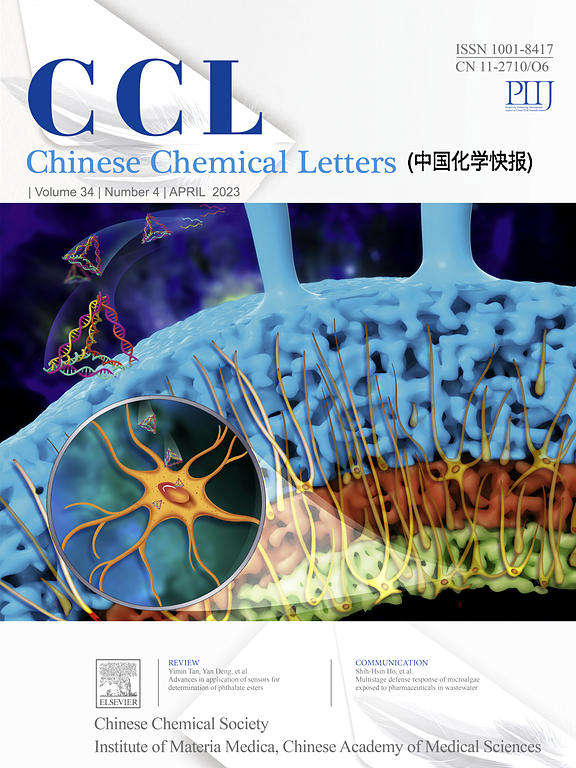基于金属卟啉的主客体络合高效光催化制氢
IF 8.9
1区 化学
Q1 CHEMISTRY, MULTIDISCIPLINARY
引用次数: 0
摘要
光催化析氢是一种很有前途的可持续燃料生产方法,但金属有机配合物(MOCs)作为光催化剂的效率往往受到其光吸收差、激子重组快和聚集的限制。为了解决这些问题,我们将基于pt的MOCs封装在基于卟啉的金属镀层中,这不仅可以防止催化剂的聚集,还可以有效地将电子从光敏金属镀层转移到光催化剂上。通过单晶x射线衍射证实了主客体配合物的结构,其中一个配合物的产氢速率为19,786.5µmol g−1 h−1,是金属基光催化体系中产氢速率最高的。飞秒瞬态吸收和DFT计算表明,性能的增强是由于有效的光诱导电子从卟啉单元转移到Pt催化中心。本研究展示了一种通过主客体络合作用整合光敏剂和光催化剂的新方法,为提高光催化制氢提供了一条有效途径。本文章由计算机程序翻译,如有差异,请以英文原文为准。

Porphyrin metallacage-based host-guest complexation for highly efficient photocatalytic hydrogen production
Photocatalytic hydrogen evolution is a promising method for sustainable fuel production, but the efficiency of metal-organic complexes (MOCs) as photocatalysts is often limited by their poor light absorption, rapid exciton recombination, and aggregation. To address these challenges, we encapsulated Pt-based MOCs within porphyrin-based metallacages, which not only prevent the aggregation of catalysts but also enable effective electron transfer from the photosensitive metallacages to the photocatalysts. The structures of the host-guest complexes were confirmed by single-crystal X-ray diffraction, and one complex achieved a hydrogen generation rate of 19,786.5 µmol g−1 h−1, which was among the highest values in metallacage-based photocatalytic systems. Femtosecond transient absorption and DFT calculations revealed that the enhanced performance is due to efficient photoinduced electron transfer from the porphyrin units to the Pt catalytic centers. This work demonstrates a new approach to integrating photosensitizers and photocatalysts via host-guest complexation, offering an effective pathway to improve photocatalytic hydrogen production.
求助全文
通过发布文献求助,成功后即可免费获取论文全文。
去求助
来源期刊

Chinese Chemical Letters
化学-化学综合
CiteScore
14.10
自引率
15.40%
发文量
8969
审稿时长
1.6 months
期刊介绍:
Chinese Chemical Letters (CCL) (ISSN 1001-8417) was founded in July 1990. The journal publishes preliminary accounts in the whole field of chemistry, including inorganic chemistry, organic chemistry, analytical chemistry, physical chemistry, polymer chemistry, applied chemistry, etc.Chinese Chemical Letters does not accept articles previously published or scheduled to be published. To verify originality, your article may be checked by the originality detection service CrossCheck.
 求助内容:
求助内容: 应助结果提醒方式:
应助结果提醒方式:


